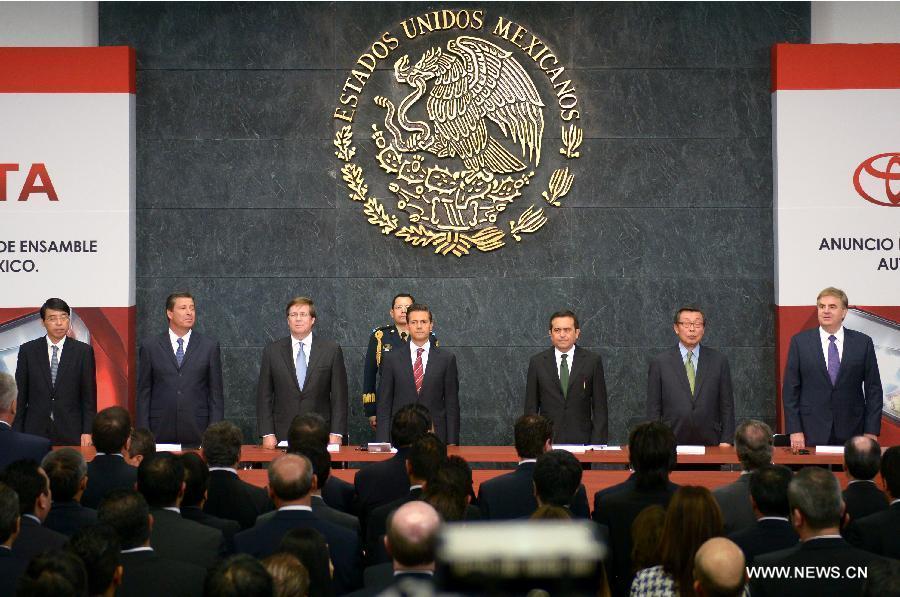By Michael Stumo, CEO of CPA, and Jeff Ferry, CPA Research Director
President Trump raised the possibility of withdrawing from the North American Free Trade Agreement last week in an Arizona speech.
“Personally, I don’t think we can make a deal … I think we’ll end up probably terminating NAFTA at some point,” Trump said.
Contrary to what you hear in the mainstream media, NAFTA withdrawal would be unlikely to cause harm to consumers.
A detailed CPA analysis reveals that the effect of a complete US withdrawal from NAFTA would have a tiny effect on US consumer prices. Our investigation shows that many of the most alarming claims are simply scare tactics, often instigated by the “Import Lobby”, i.e. multinationals and trade associations that have long favored imports over US production.
The US is less import dependent than any developed country. Total US goods imports were only 11.9% of GDP, a smaller percentage than ALL world economies except five (Nigeria, Sudan, Argentina, Brazil, Cuba). Mexican imports made up just 13% of total US goods imports. Post NAFTA tariffs on Canadian imports would remain nearly zero. Post NAFTA tariffs on Mexican imports would be between zero and five percent on most goods. Consumer would see very little price difference because tariff changes would be small and unlikely to be fully passed on to consumers.
Last year, the US imported $294 billion worth of goods from Mexico and $278 billion from Canada. If NAFTA disappeared, our imports from Canada would still be covered by the pre-existing Canada Free Trade Agreement of 1989, and thus Canadian import prices would be largely unaffected. Hence we focus on Mexico in this note.
Tariffs on Mexican imports would revert to the levels specified in the US tariff schedule. These are published on the Department of Commerce’s website. In most cases, these tariff levels are very low (usually either zero or single-digit percentages), reflecting the longtime US government position in support of low import tariffs even with nations with whom we have no free trade agreement (FTA). Exchange rate and energy prices often fluctuate more than these potential tariff changes.
Most of our imports from Mexico are motor vehicles, electronics, machinery and other products. According to US Census data, the top product segments of our Mexican imports last year were: vehicles, electric and other machinery, photo & medical instruments, and furniture. Together those segments account for 72% of our imports from Mexico. Table 1 shows a detailed breakdown of imports within those segments to get a sense of what tariffs would apply if NAFTA disappeared.
Table 1: US Tariffs on Mexican Goods After NAFTA: Key Sectors. Note: Figures in pink are estimated sector-wide averages.

The tariffs that would apply to most goods from Mexico are consistently between zero and 5%. Car importers would pay a tariff of 2.5%; refrigerators and similar goods would pay an average tariff of 0.3%. Internal combustion engines pay zero tariff, although engine parts pay a tariff of 1%. The one outstanding exception to the pattern is for complete trucks, which would pay a tariff of 25% on import into the US. This unusually high tariff was nicknamed the “chicken tax” back in the early 1960s when it was enacted by Congress at the behest of President Johnson. It was the result of a spat with the six original European members of the European Economic Community, who were resisting imports of US poultry. Nevertheless, even taking the chicken tax into account, our estimate of the overall impact on prices of Mexican imports in a typical year in the event of NAFTA’s disappearance is 4%. In other words, the price paid by the US buyers for Mexican goods would rise by an average of 4%. The effect of that 4% increase in Mexican goods on the overall US consumer price index is too small to measure.
NAFTA supporters argue that the effects might be more significant on particular sectors of the economy. But even here they mislead through exaggeration and partial analysis. Motor vehicles is the sector which has generated the most alarmist claims. It is alleged that the supply chain is so integrated between the US and Mexico that any effort to disentangle the supply chain will add as much as $2,000 to the price of a car, according to one car dealers’ spokesman. But with tariffs of 1% on engine parts, the cost of shipping these parts back and forth across the border would easily outweigh the costs of a tariff that would arise in the absence of NAFTA.
The key point to recognize is that the US motor vehicles sector has suffered under NAFTA. It has lost jobs, and real average hourly earnings have fallen 26.8% since 2002. This is the price that US auto workers have paid for close integration with Mexico.
If we disentangle our industry from Mexico, we can begin to put in place the additional measures that are needed to rebuild the auto industry and the living standards of the US worker. We can also begin negotiating with Mexico from a position of independence. It is essential that the US government tell the Mexican government that we would like to be more integrated, but can only do so once we see Mexican wages rising very significantly, so integration does not mean a decline in US living standards.
##













